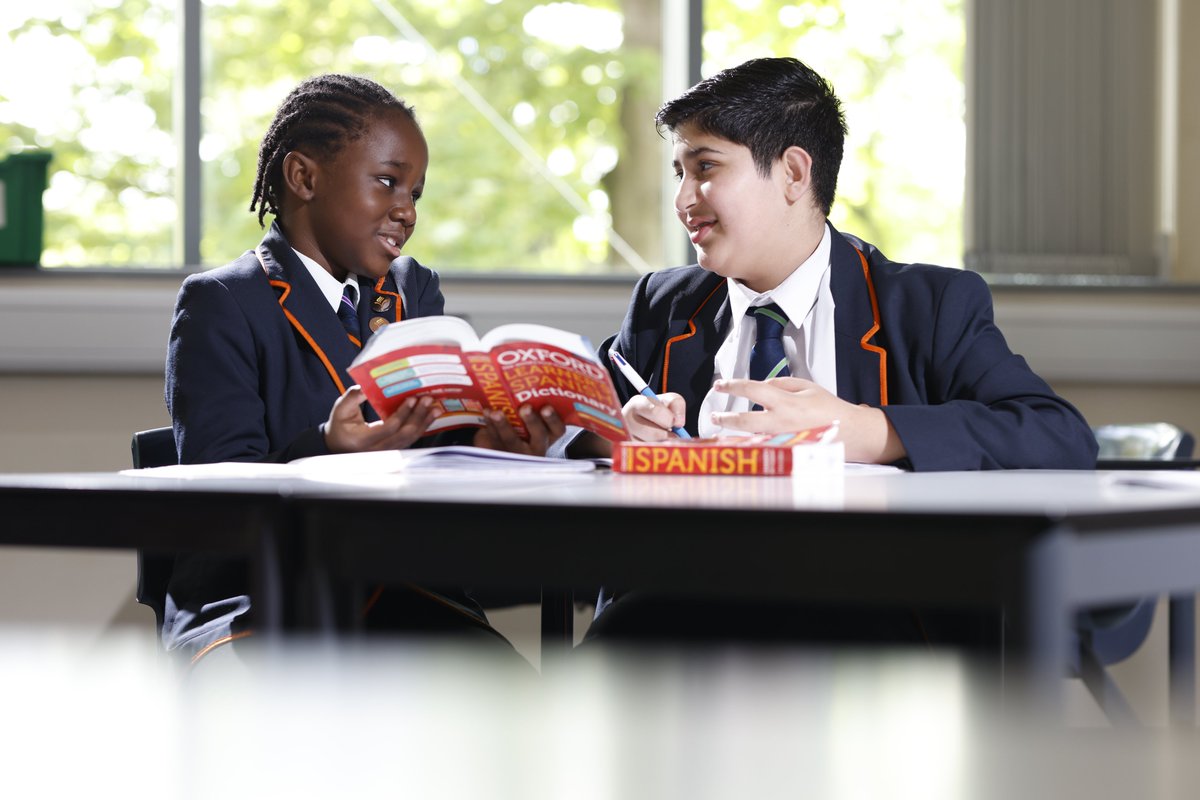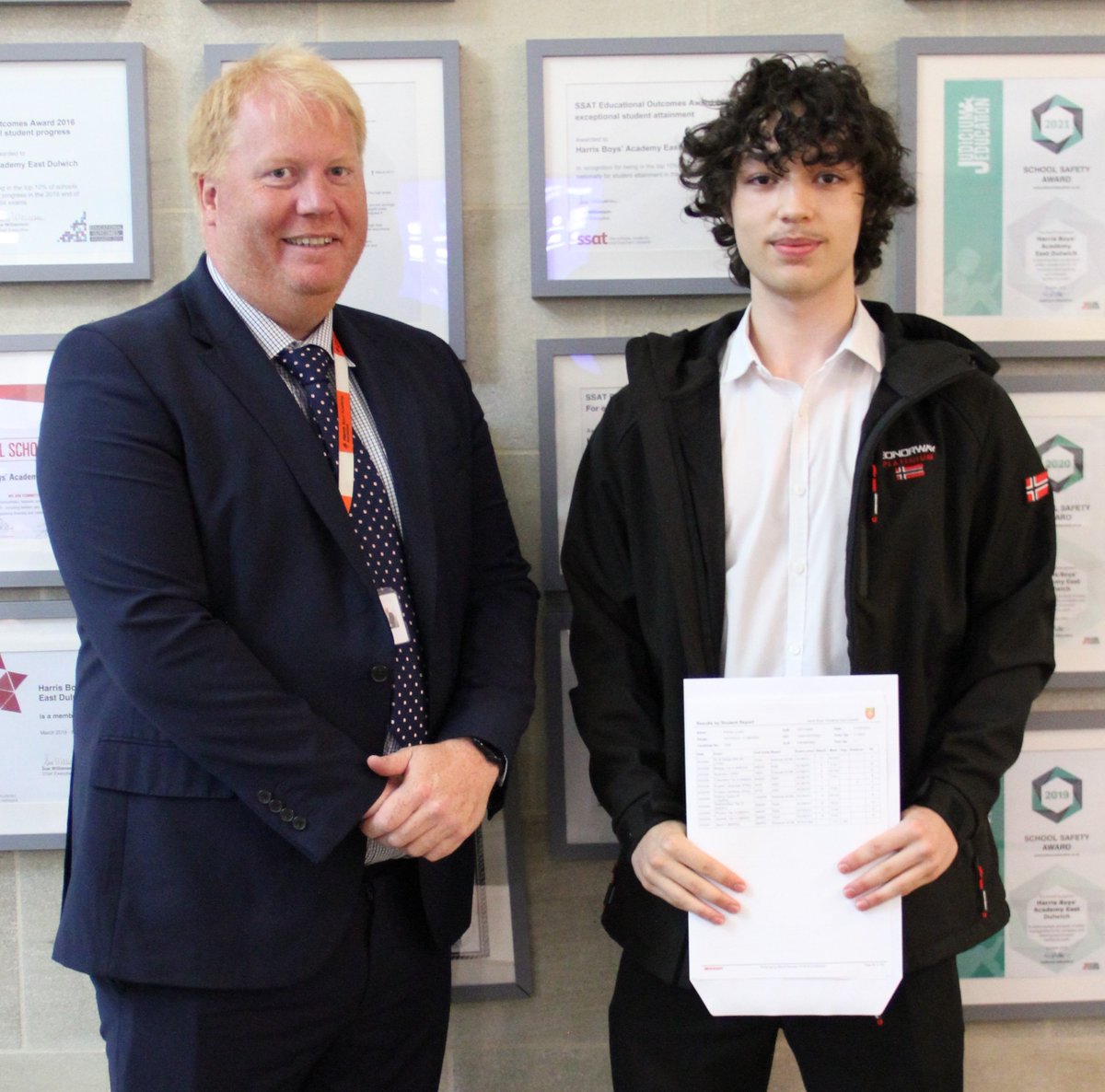Latest News
Posted on September 10th 2018
9/11 Survivor Tells her Moving Story to Sixth Form
Sixth formers at Harris Boys’ Academy East Dulwich had the privilege of meeting 9/11 survivor Janice Brooks when she visited our academy recently.
Janice was working on the 84th storey of Two World Trade Center when it was attacked in 2001. In testimony that was often difficult to listen to, she described how people helped each other escape the building – treating each other’s wounds and carrying those unable to walk.

Janice’s visit to the academy was organised by the charity Since 9/11, whose education programme helps students understand what happened in the attack and how it has changed the world.
“We have an obligation to teach students about the events that have shaped the world they live in,” said Head of Academy Peter Groves. “In my lifetime, there has been no more momentous event than 9/11 so for our students to have this opportunity to hear from Janice is very valuable. It will help them think about how they view the world, and also about the importance of resilience and supporting one another through adversity.”
“Engulfed by darkness”
Janice, from Essex, had only arrived in New York the month before and was working at her desk at 7.30am when the first tower was hit. She described how people were initially undecided about whether or not to evacuate, and then recounted the moment the second plane struck.
“We were walking along the corridor and suddenly there was a huge bang. I stumbled, I didn’t fall to the floor, and it went completely black, with dust, grit, dirt. The ceiling fell down, crunching sounds, banging sounds and then stillness. Everyone was coughing. There were probably about seven of us in this little corridor.”
Janice described how she and group of colleagues managed to prise open a door and escape slowly down flight after flight of stairs. “When we eventually managed to walk out of the building it was chaotic, people running everywhere,” she told our students. “And as we’re trying to leave, hundreds of firemen are running into the building. I looked up at the tower and where our floor should have been was this big gaping hole and flames. I thought about the last people I’d seen in there.” Sixty one of Janice’s colleagues were among the 2,977 people who died in the attack.
After escaping from the tower Janice made her way to her nearby flat, only to see it engulfed by darkness when the second tower collapsed. “My building started to shake, the crockery in the dishwasher started to rattle, the windows started to vibrate and hum,” she said. “There was an almighty crashing sound and one by one the windows blacked out… a creeping cloud was working around the building until I couldn’t even see my hand in front of my face. I was convinced I was going to die. I remember sitting on the sofa rocking backwards and forwards thinking 'this is it'. I almost didn’t mind dying but I didn’t want to be alone.”
BBC News covered the visit for the evening London news programme, interviewing three of our students including Georgie (pictured) about why they think it's important to hear Janice's first-hand account.

“Eerie stillness”
When the dust cloud passed, Janice decided to leave the flat and make her way to someone she knew in Queen’s. She described the eerie stillness on the streets. “No birds, no traffic, no honking, no horns. It’s what I imagined a nuclear holocaust might be like,” she told our students. “Every tree covered in white ash. I wandered around shouting out ‘hello, anybody’.”
Janice eventually made her way to a metro station where people were very kind and helped her find her way to the address in Queens. She described how that night she couldn’t sleep because every time she shut her eyes she saw again the black cloud engulfing her building.
But the following day she and her surviving colleagues set up a makeshift office in Manhattan and spent the following days answering calls from families desperate for news of their loved ones.
“Admitting you’re struggling can be hard”
Although offered counselling, Janice refused at first. “I was British, after all, so it was ‘stiff upper lip’, I suppose,” she told our sixth formers. “I felt I didn’t need it. After all, nothing had really happened to me, had it? I mean, I’d not lost a husband or sister or anything, had I?”
It was only on the first anniversary of the attack, when Janice was given the job of contacting all the families and arranging a service of remembrance that she finally cracked and admitted she couldn’t cope alone.
Janice stressed to our sixth formers that admitting you need help is not a sign of weakness, but of strength. “Admitting you’re struggling can be hard,” she said. “But don’t ever worry about being seen to be weak. It’s good to seek help.”
Now Janice wants to make sure people never forget the impact of that day. “Last year I listened to all the news broadcasts on September 11 and not one mentioned the attack,” she said. “If just one person understands more about what happened because of my visit here then it will have been worth it.”
Janice pictured with students Dylan and Jeremiah.

What our students said…
“It’s an extraordinary thing she’s doing by coming here,” said Georgie, Year 12, speaking after listening to Janice’s talk. “It made me think about the survivors who have to live with the tragedy and it’s still very hard for her.”
Jeremiah, Year 12, said it was the detail of Janice’s story that really affected him. “Not a lot of people hear detail like this, about how it actually was for someone inside the World Trade Centre,” he said. “Once you hear the detail you start to understand the emotions of people trapped inside, some of them who never came out.”
Dylan, Year 13, agreed. “It’s really touched me and I think I’m not going to take anything for granted and it amplifies that you never really know what’s going to happen so live every moment you can,” he said.
Education programme
The charity Since 9/11 was originally set up to bring a piece of the World Trade Center to London to be part of a public commemorative project, explains its director Liam Duffy. “We now have an education project including talks like this but also workshops in schools up and down country about extremism, terrorism and helping children develop critical thinking so they build up resilience to extremism,” he said. Last term the charity reached over 4,000 children.























